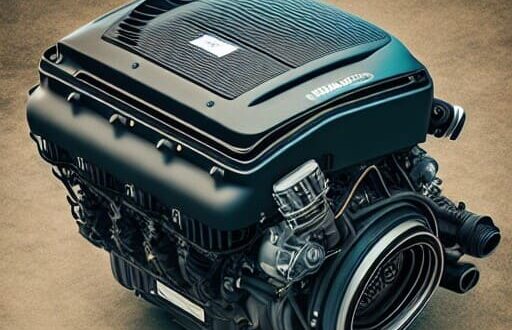Many of you may have come across this term – Turbo Engine. But what is it? An internal combustion engine known as a turbo engine can be found in a wide range of vehicles. A turbocharger is used to increase the air pressure in the intake manifold. Doing so, thereby allows a more forceful fuel injection into the cylinders. This results in more power and better fuel efficiency. If you’re interested in learning more about how a turbocharged car works and how it can benefit you, keep reading.
The first thing to remember is that a turbocharger is not an engine but a component of an engine. It is used to compress air and force it into cylinders. This allows more fuel to be injected into the mixture, producing more power for the engine.
The typical car engine has a single- or double-overhead camshaft (SOHC or DOHC) that turns the crankshaft. This is done by using connecting rods and pistons to compress air and fuel together. The more they are compressed, the more power is created by burning them together in an explosion.
A turbocharger is a device that enhances the power output of an engine by increasing its air pressure. This can be done through either a compressor or turbine with an intercooler placed in between. When you press the accelerator pedal, more fuel is injected into the cylinders, which causes the cylinders to compress and ignite the air.
How does a turbocharger work? A turbocharger is basically a small turbine that’s attached to an engine. The turbine uses exhaust gases from the engine to spin a shaft, which in turn pressurizes air going into the intake manifold. This allows for more fuel to be injected into each cylinder, leading to increased power and better efficiency.
In other words, a turbocharger is a device that uses the energy of exhaust gases to spin a turbine, which in turn spins an air compressor. The compressor pressurizes the intake air and forces it into the engine’s cylinders.
Benefits of a turbo engine
Turbocharged engines have become increasingly popular in modern cars due to several benefits they offer:
- Improved Power and Performance: One of the main benefits of a turbo engine is increased power and performance. A turbocharger compresses the air flowing into the engine, allowing more air to enter the combustion chamber and mix with more fuel, resulting in more power and better acceleration.
- Better Fuel Efficiency: Despite the increased power, turbocharged engines can also be more fuel-efficient than their naturally aspirated counterparts. By compressing the air, the engine can burn fuel more efficiently, resulting in better fuel economy.
- Lower Emissions: Turbocharging can also help reduce emissions, especially of harmful pollutants like Carbon Dioxide and Nitrogen Oxides. By burning fuel more efficiently, turbo engines produce less waste and are generally more environmentally friendly.
- Smaller Engine Size: Turbochargers can also allow automakers to use smaller engines without sacrificing power or performance. This can help reduce the weight of the vehicle, improve handling, and increase fuel efficiency.
- Better High-Altitude Performance: Turbocharged engines are particularly well-suited for high-altitude driving since the thinner air at higher elevations can cause naturally aspirated engines to lose power. Turbochargers can help maintain power output at higher altitudes. Simply put, turbo engines still have high performance in environments with low oxygen level.
Overall, turbocharged engines offer several benefits that can improve power, performance, fuel efficiency, and environmental friendliness. However, they can also be more complex and expensive to maintain than naturally aspirated engines, so it’s important to weigh the pros and cons before making a decision.
 Spot Dem Everything About Cars
Spot Dem Everything About Cars



